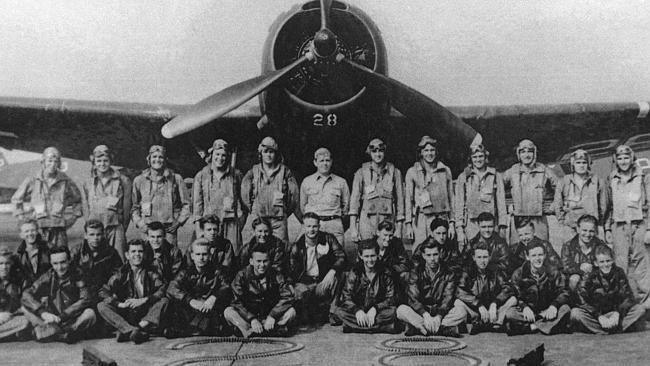Loss of 27 souls on Flight 19 gave rise to Bermuda Triangle myth
“Something happened out there,” Florida congressman Clay Shaw told political colleagues a decade ago. “To this day, Flight 19 remains one of the great aviation mysteries.”

Today in History
Don't miss out on the headlines from Today in History. Followed categories will be added to My News.
‘Something happened out there,” Florida congressman Clay Shaw told political colleagues a decade ago. “To this day, Flight 19 remains one of the great aviation mysteries.”
Flight 19 is indeed a great mystery, one which has given rise to superstitions of inexplicable magnetic or extraterrestrial forces active in busy shipping lanes stretching from Puerto Rico to Bermuda and Miami. Even the US Navy Board of Inquiry report concluded, “We are not able to even make a good guess as to what happened.”
Reports of inexplicable phenomena in the area supposedly date to Christopher Columbus’s log notes of bizarre compass bearings in the area in 1492. The loss of five aircraft and 27 airmen on a training mission out of Fort Lauderdale 70 years ago, on December 5, 1945 left the area notorious as the Bermuda, or Devil’s, Triangle.
The Avenger torpedo bombers left about 2.10pm as Flight 19 on an authorised routine overwater navigation training mission over the Bahamas from Fort Lauderdale Naval Air Station on the Banana River.
Led by instructor Lieutenant Charles Taylor, the planes would practise bombing and low-level strafing on small coral shoals 100km east of the naval station.
Then they would turn north to practise mapping, then fly southwest to home. The entire exercise, completed by Air Station pilots three or four times a day, should have lasted three hours.
Radio reports overheard by ground control and other planes indicated the compasses on Taylor’s plane malfunctioned 90 minutes into the mission. Without instruments to guide him over open ocean, Taylor thought the flight had drifted offcourse to pass south over the Florida Keys, so he directed the planes to fly due north to reach land.
Flight instructor David White, stationed at Fort Lauderdale at the time, explained: “He was not in the Keys, he was out in the end of the Bahama chain. When he went north, he was going out to the wide ocean.”
At the time the squadron was due to land back at Fort Lauderdale, Taylor transmitted a final radio message, saying they would keep flying “until we hit the beach or run out of gas”. A weak radio signal prevented a reading on the location of the planes.
The tragedy continued at 7.27pm, when a Martin Mariner Navy rescue plane carrying 13 crewmen also vanished. A passing ship reported seeing bright lights in the sky that resembled an in-air explosion, but no wreckage of the Mariner was found.
The next morning, White joined one of the largest rescue missions in US naval history as civilian vessels joined Coast Guard, Army and Navy units to scour more than 647,497sq km. They found no wreckage.
“In all the times I remember we never had one plane missing,” White said. “Five all qualified pilots missing at one time? I couldn’t believe it.”
The Naval inquiry heard the ship the SS Gaines Mills sighted flames in the exact spot the Martin Mariner had “disappeared from the radar screen and never reappeared”.
It found that concentrated search operations from December 6 to December 10 “by surface and aircraft in the area of the reported explosion failed to reveal any debris of the missing PBM or evidence of its crew”.
The first account of unusual disappearances in the Bermuda area appeared in a report by Edward Van Winkle Jones in The Miami Herald in September 1950. Journalist Vincent Gaddis coined the term Bermuda Triangle in a 1964 cover story on Flight 19 for Argosy magazine.
But Arizona State University librarian Lawrence Kusche in his 1975 book, The Bermuda Triangle Mystery: Solved, argued many claims about the area were exaggerated, dubious or unverifiable.
He found the number of ships and aircraft reported missing in the heavily-trafficked area was not significantly greater, proportionally speaking, than in any other part of the ocean.
Given frequent tropical cyclones, the number of disappearances that did occur were, he found, neither disproportionate, unlikely, nor mysterious.
The Coast Guard is also officially sceptical of the Triangle, noting that they collect and publish, through their inquiries, much documentation contradicting many of the incidents written about by Triangle authors.
Originally published as Loss of 27 souls on Flight 19 gave rise to Bermuda Triangle myth


